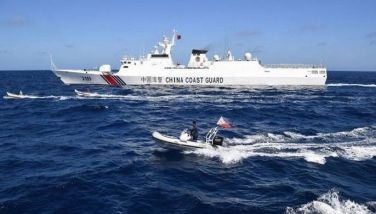NASA satellite won't hit Phl, PAGASA says
MANILA, Philippines - An official of the Philippine Atmospheric, Geophysical and Astronomical Services Administration (PAGASA) allayed fears yesterday that a defunct satellite of the US National Aeronautics and Space Administration (NASA) would hit populated areas in the country as it continued to plunge towards Earth.
Mario Raymundo, chief of the PAGASA Astronomical Observatory, cited the assurance given by NASA scientists who are continuously tracking the trajectory of the six-ton Upper Atmosphere Research Satellite (UARS) that it will not hit anyone anywhere on the planet.
“Let’s not be afraid because there is nothing in recorded history that such events have affected people or damaged properties,” Raymundo said in an interview.
Citing NASA reports, Raymundo said the 20-year-old spacecraft was likely to hit bodies of water.
He said the UARS was predicted to crash into Earth today, but the exact time and place where it will hit have yet to be determined.
NASA said scientists would only be able to make more accurate predictions about where the satellite might land two hours before it enters the Earth’s atmosphere.
“If it falls in the evening, it will look like a meteor shower,” he said.
The US space agency said the risk to life from the UARS is one in 3,200.
NASA said that most of the satellite will break or burn up before reaching Earth.
But scientists have identified 26 separate pieces that could survive the fall through the atmosphere. This debris could rain across an area 400 to 500 kilometers (250-310 miles) wide.
Robust, spherical satellite components such as fuel tanks are most likely to survive the fiery plunge to Earth, NASA said.
UARS is one of the biggest American satellites to make an uncontrolled re-entry in more than 30 years.
However, the Skylab space station, which also made an uncontrolled plunge through the atmosphere in 1979, was about 15 times heavier than the tumbling satellite.
Experts said that a recent expansion in the Earth’s atmosphere due to heating by ultraviolet radiation has been causing UARS to fall to Earth faster than expected.
Raymundo said the satellite was earlier predicted to crash in October.
The expansion increases the atmospheric drag on satellites in space, hastening re-entry, NASA said.
The US satellite was deployed in 1991 from the space shuttle Discovery on a mission to study the make-up of Earth’s atmosphere, particularly its protective ozone layer.
- Latest
- Trending




























